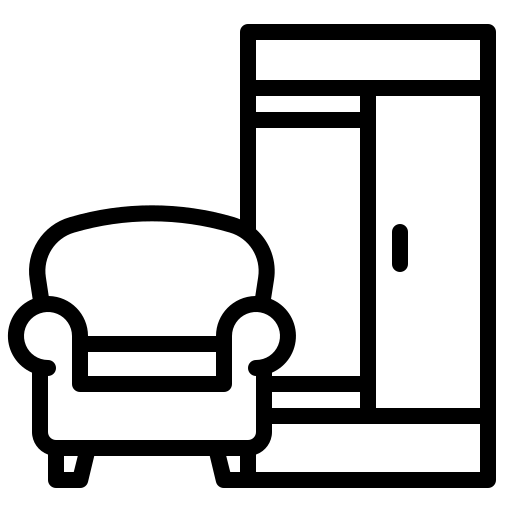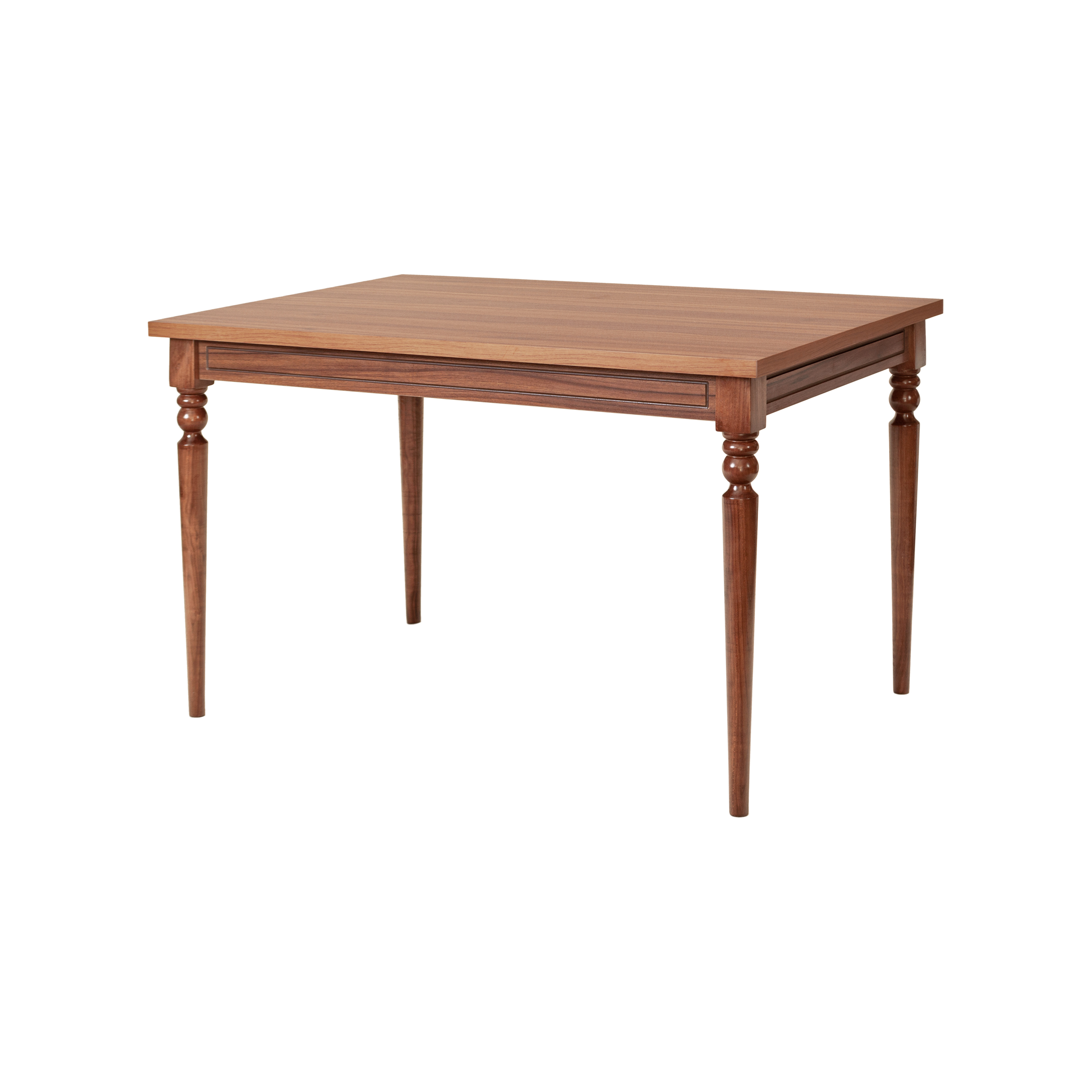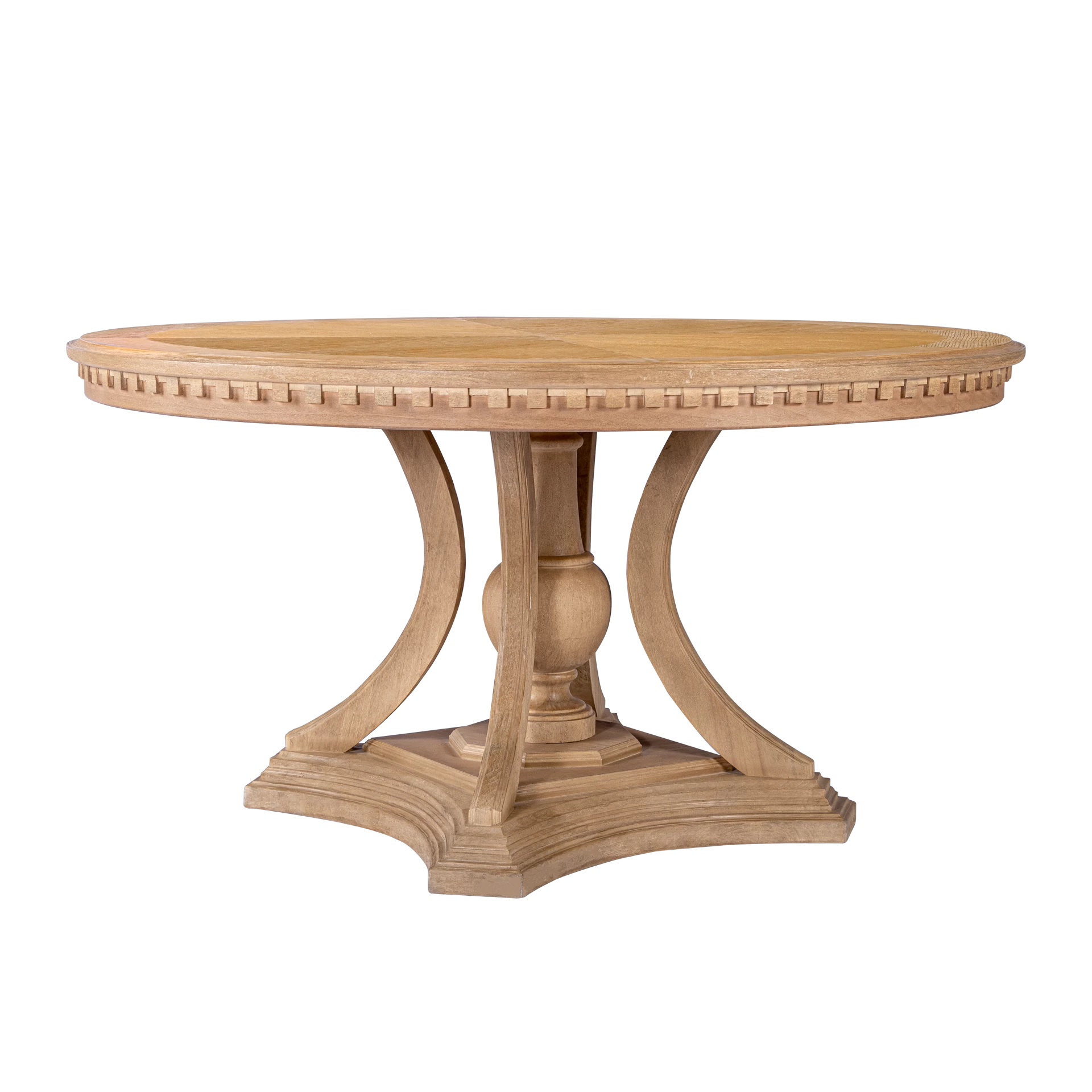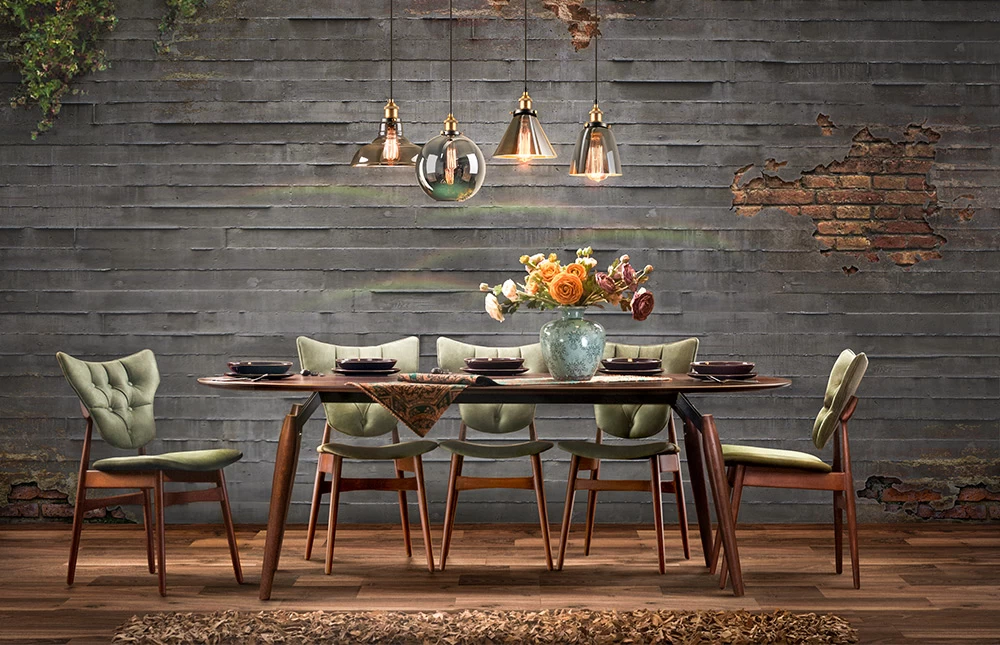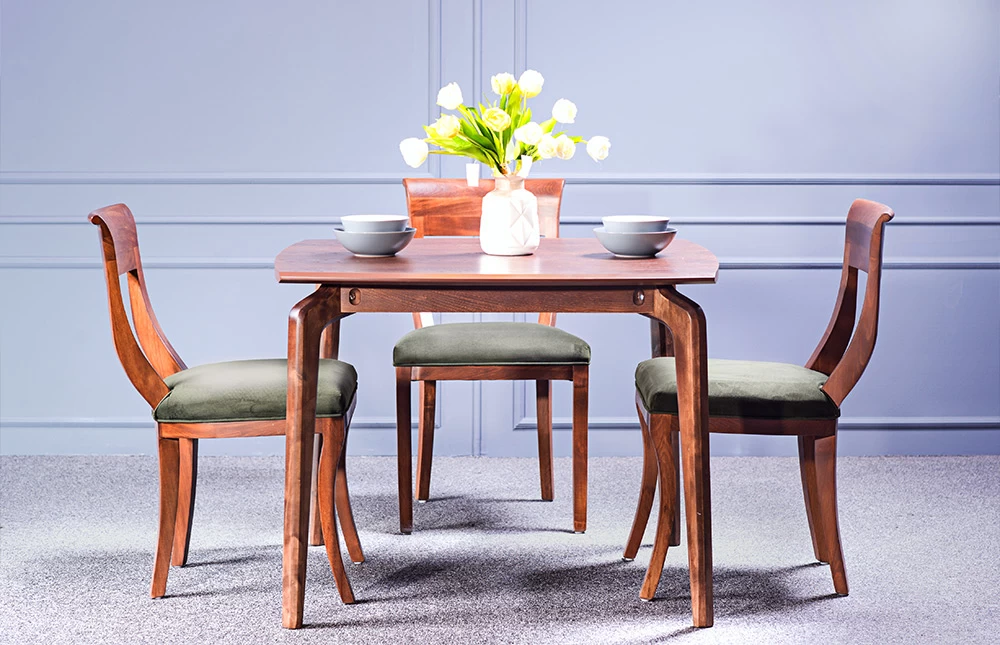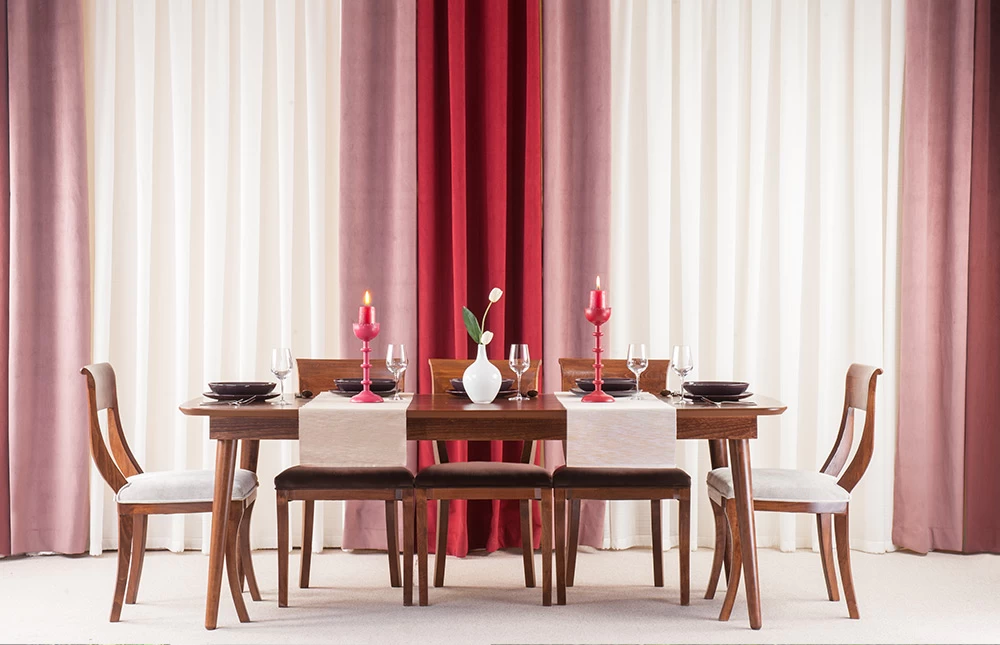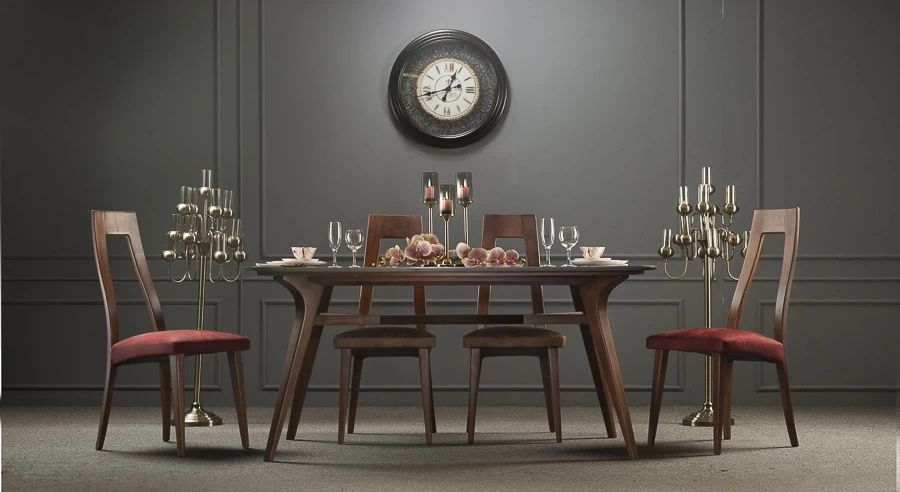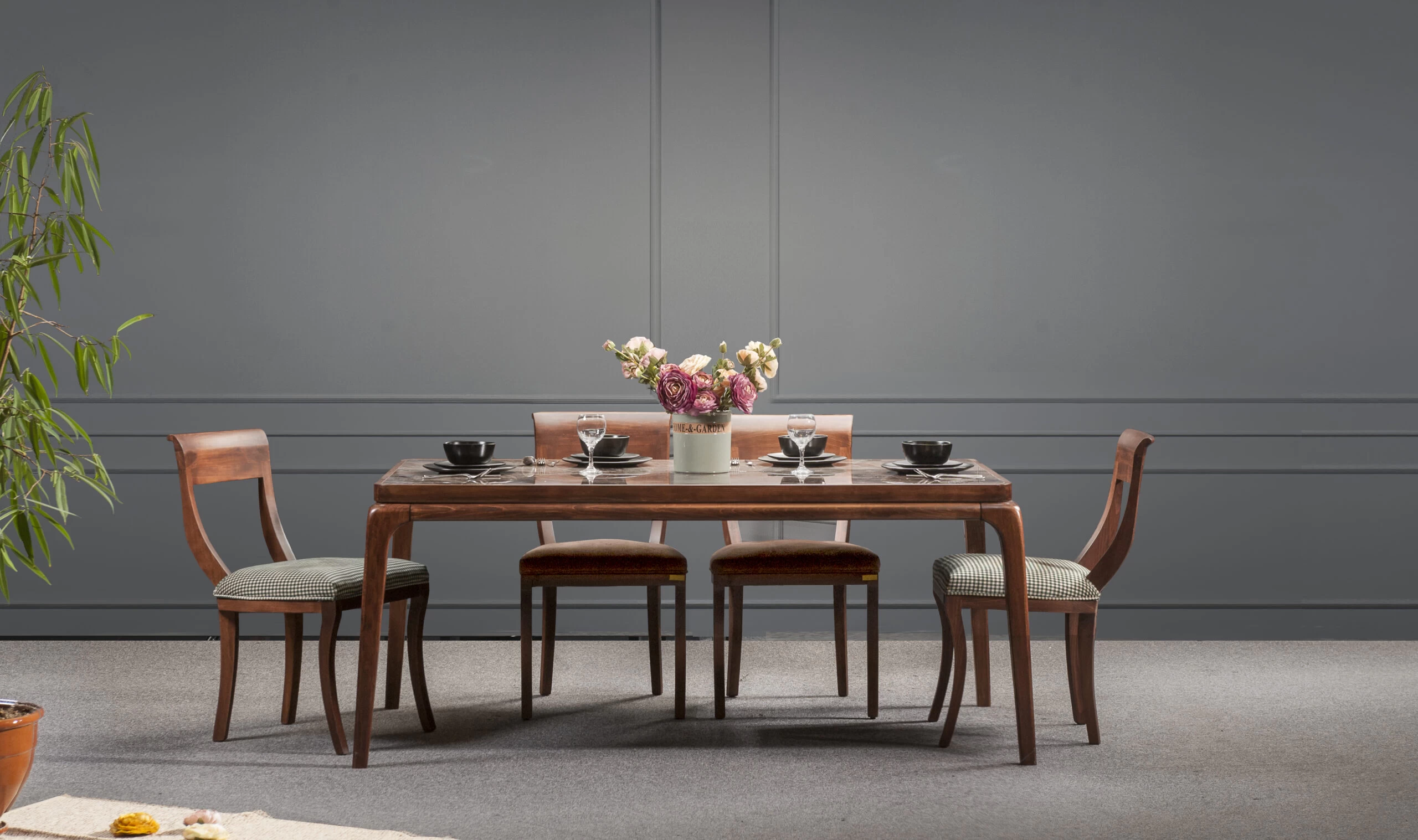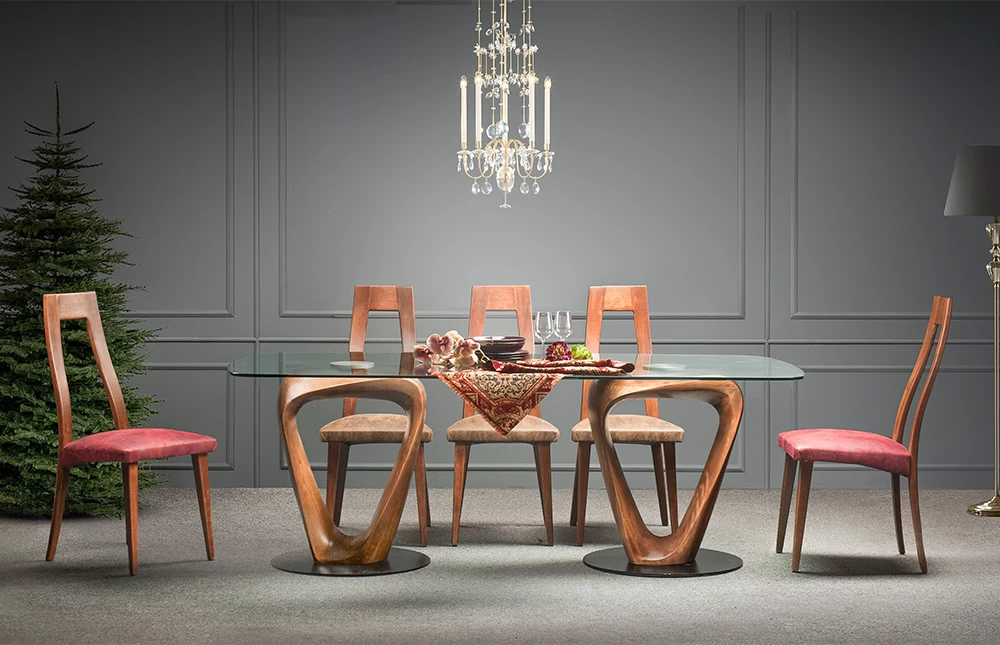Dining Table
Dining tables are a central piece of furniture in the dining room or kitchen area of a home.
They serve as the primary surface for enjoying meals, as well as a gathering place for family and guests. Dining tables come in a wide variety of shapes, sizes, styles, and materials to suit different design preferences and space constraints.
Common dining table shapes include rectangular, square, oval, and round. Rectangular tables are the most classic and versatile, while round and oval tables can create a more intimate, cozy atmosphere. Square tables work well in smaller spaces.
In terms of materials, popular options include wood (e.g. oak, maple, cherry, walnut), glass, stone (e.g. marble, granite), and metal (e.g. steel, iron, aluminum). Wood tables offer a warm, traditional look, while glass and stone create a more modern aesthetic. Metal bases can provide an industrial or minimalist vibe.
Dining table sizes range from compact 2-4 person tables to large 8-10+ person tables for hosting big gatherings. The size you choose depends on the dimensions of your dining area and how many people you need to accommodate regularly.
Other key dining table features to consider include:
- Extension leaves or butterfly leaves to expand the table size
- Pedestal vs. four-leg base designs
- Decorative elements like carved legs, trestle bases, or decorative edging
- Protective table pads or glass/acrylic table tops
Ultimately, the right dining table blends form, function, and personal style to create an inviting space for meals and conversation. Considering your space, needs, and aesthetic preferences will help you find the perfect dining table.
The topic being discussed is dining tables, which are a type of furniture rather than home appliances. Dining tables are a essential piece of furniture in most homes, serving as the central gathering place for meals and conversations.
The information provided in the previous responses covers the various styles, materials, shapes, and sizes of dining tables. Common table materials include wood, glass, marble, and metal. Shapes can be rectangular, square, oval, or round. Sizes range from compact 4-person tables to large 8-10+ person options.
Ultimately, the dining table is a vital furniture piece that anchors the dining room or kitchen area. It influences the overall aesthetic of the space and needs to be chosen carefully based on practical needs as well as design preferences.
Dining tables are clearly a type of furniture, not home appliances. The discussion has been focused entirely on the features and characteristics of this important household furniture item.

When choosing the right dining table for a home, there are several key factors to consider:
1. Size and Dimensions:
- Measure the available space in the dining area to determine the maximum table size that can comfortably fit.
- Consider the number of people you need to accommodate regularly and choose a table size that provides adequate seating.
- Look for tables with extension leaves or butterfly leaves that can expand to accommodate more guests when needed.
2. Shape and Layout:
- Rectangular tables are the most classic and versatile, well-suited for larger spaces.
- Square and round tables work better in more compact rooms, creating a cozier, more intimate atmosphere.
- Oval tables blend the space-saving qualities of a rectangle with softer edges.
- Evaluate the shape that will best fit the layout and flow of the dining area.
3. Material and Finish:
- Wood tables (e.g. oak, maple, walnut) offer a warm, traditional aesthetic.
- Glass, marble, or stone tables provide a sleek, sophisticated look.
- Metal tables (steel, aluminum) have a more industrial or contemporary vibe.
- Consider the overall design style and décor of the space when selecting the table material.
4. Durability and Maintenance:
- Choose a table material that will withstand daily use and be easy to clean.
- Wooden tables may require periodic refinishing or oiling to maintain their appearance.
- Glass, stone, or metal tables are generally more low-maintenance.
5. Styling and Coordinating Pieces:
- Evaluate how the table's style, shape, and size will complement the other furniture and décor in the dining area.
- Select coordinating dining chairs that provide both comfort and aesthetic appeal.
- Consider adding other pieces like a sideboard, buffet, or china cabinet to complete the dining room setup.
By carefully considering these key factors, you can select a dining table that not only meets your practical needs but also enhances the overall design and functionality of your home's dining space.

here are some tips for properly measuring the dining area to ensure the dining table you choose will fit well:
1. Measure the Room Dimensions:
- Use a tape measure to determine the length and width of the dining area.
- Make note of any alcoves, built-ins, or other architectural features that could impact table placement.
- Measure the height of the ceiling as well, to ensure there is adequate clearance for the table and chairs.
2. Allow for Walkway Space:
- Plan for at least 36-48 inches of clearance around the table for comfortable movement.
- In tighter spaces, aim for a minimum of 30 inches between the table edge and walls/furniture.
- Ensure there is enough room to pull chairs out and walk around comfortably.
3. Consider Table Shape and Size:
- Measure the maximum table length and width that will fit in the space.
- For rectangular tables, measure the longest wall and subtract at least 24-36 inches to determine the maximum table length.
- For round or square tables, measure the available open floor space and subtract 24-36 inches on all sides.
- Factor in any desired clearance for a buffet, sideboard, or other furniture pieces in the dining area.
4. Account for Chair Dimensions:
- Measure the depth of the dining chairs you plan to use, typically 16-24 inches.
- Add this chair depth to the table length/width measurements to ensure adequate space for chairs.
- Leave 24-30 inches between the table edge and the wall to comfortably accommodate chairs being pulled out.
5. Sketch a Scale Layout:
- Draw a scale diagram of the dining area, including walls, doorways, and other obstructions.
- Map out different table size and shape options to visualize the best fit.
- This will help you determine the optimal table dimensions before making a purchase.
By taking these careful measurements and considering the various spatial factors, you can ensure the dining table you select will be the perfect fit for your dining area.
- Pedestal vs. four-leg base designs
- Decorative elements like carved legs, trestle bases, or decorative edging
- Protective table pads or glass/acrylic table tops
The topic being discussed is dining tables, which are a type of furniture rather than home appliances. Dining tables are a essential piece of furniture in most homes, serving as the central gathering place for meals and conversations.

- Measure the available space in the dining area to determine the maximum table size that can comfortably fit.
- Consider the number of people you need to accommodate regularly and choose a table size that provides adequate seating.
- Look for tables with extension leaves or butterfly leaves that can expand to accommodate more guests when needed.
- Rectangular tables are the most classic and versatile, well-suited for larger spaces.
- Square and round tables work better in more compact rooms, creating a cozier, more intimate atmosphere.
- Oval tables blend the space-saving qualities of a rectangle with softer edges.
- Evaluate the shape that will best fit the layout and flow of the dining area.
- Wood tables (e.g. oak, maple, walnut) offer a warm, traditional aesthetic.
- Glass, marble, or stone tables provide a sleek, sophisticated look.
- Metal tables (steel, aluminum) have a more industrial or contemporary vibe.
- Consider the overall design style and décor of the space when selecting the table material.
- Choose a table material that will withstand daily use and be easy to clean.
- Wooden tables may require periodic refinishing or oiling to maintain their appearance.
- Glass, stone, or metal tables are generally more low-maintenance.
- Evaluate how the table's style, shape, and size will complement the other furniture and décor in the dining area.
- Select coordinating dining chairs that provide both comfort and aesthetic appeal.
- Consider adding other pieces like a sideboard, buffet, or china cabinet to complete the dining room setup.

- Use a tape measure to determine the length and width of the dining area.
- Make note of any alcoves, built-ins, or other architectural features that could impact table placement.
- Measure the height of the ceiling as well, to ensure there is adequate clearance for the table and chairs.
- Plan for at least 36-48 inches of clearance around the table for comfortable movement.
- In tighter spaces, aim for a minimum of 30 inches between the table edge and walls/furniture.
- Ensure there is enough room to pull chairs out and walk around comfortably.
- Measure the maximum table length and width that will fit in the space.
- For rectangular tables, measure the longest wall and subtract at least 24-36 inches to determine the maximum table length.
- For round or square tables, measure the available open floor space and subtract 24-36 inches on all sides.
- Factor in any desired clearance for a buffet, sideboard, or other furniture pieces in the dining area.
- Measure the depth of the dining chairs you plan to use, typically 16-24 inches.
- Add this chair depth to the table length/width measurements to ensure adequate space for chairs.
- Leave 24-30 inches between the table edge and the wall to comfortably accommodate chairs being pulled out.
- Draw a scale diagram of the dining area, including walls, doorways, and other obstructions.
- Map out different table size and shape options to visualize the best fit.
- This will help you determine the optimal table dimensions before making a purchase.
FAQs
What are the most common dining table shapes?
The most common dining table shapes are rectangular, square, round, and oval.
How do I choose the right size dining table for my space?
Measure your dining area and account for chair clearance to determine the maximum table size that will fit comfortably.
What are the key materials used for dining tables?
Common dining table materials include wood, glass, marble, stone, and metal.
How can I ensure my dining table coordinates with my existing decor?
Consider the overall style, color palette, and finishes in your dining room when selecting a table that will seamlessly blend in.
 +7929688-88-14
+7929688-88-14

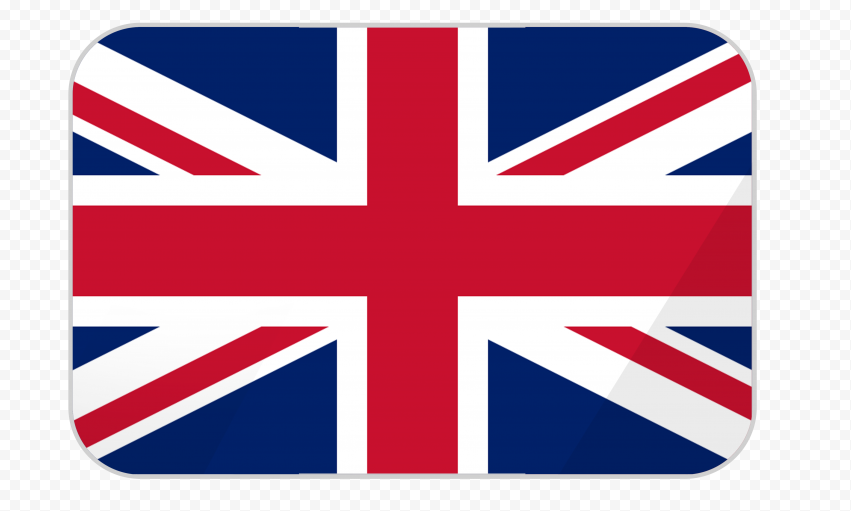 English
English
 Persian
Persian
 Russian
Russian
 Chinese
Chinese


 +7929688-88-14
+7929688-88-14


